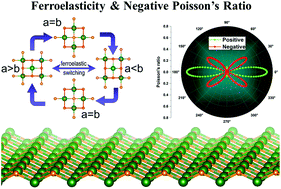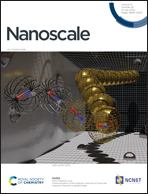A new family of two-dimensional ferroelastic semiconductors with negative Poisson's ratios†
Abstract
Two-dimensional (2D) materials with both ferroelasticity and negative Poisson's ratios have attracted intensive interest, but it is very rare to have both ferroelasticity and negative Poisson's ratios in a single material. Directional positive and negative Poisson's ratios in a switchable ferroelastic dielectric may enable non-destructive readout in ferroelastic data storage. Herein, we propose 14 kinds of stable 2D semiconductors: AB monolayers (A = Sc, Y, La; B = N, P, As, Sb, Bi) based on first-principles calculations. The band gaps of AB monolayers cover a wide range from 0.69 eV to 2.15 eV. Mechanical analysis reveals that these materials are flexible and 12 of 14 are predicted to possess an in-plane negative Poisson's ratio (NPR). Moreover, 10 of these 14 systems possess an out-of-plane NPR. More encouragingly, all AB monolayers are identified as 2D ferroelastic materials with reversible strains of around 5.94% to 20.30%. The ferroelastic switching barriers, mechanical properties and electronic structures of these materials are discussed in detail. Such outstanding properties make the AB monolayers very promising as switchable anisotropic 2D materials for nanoelectronics and micromechanical applications.



 Please wait while we load your content...
Please wait while we load your content...